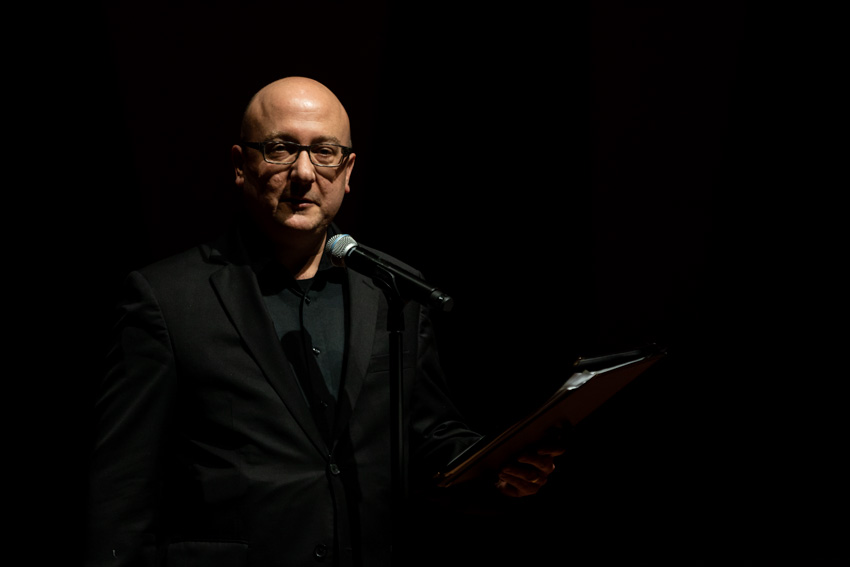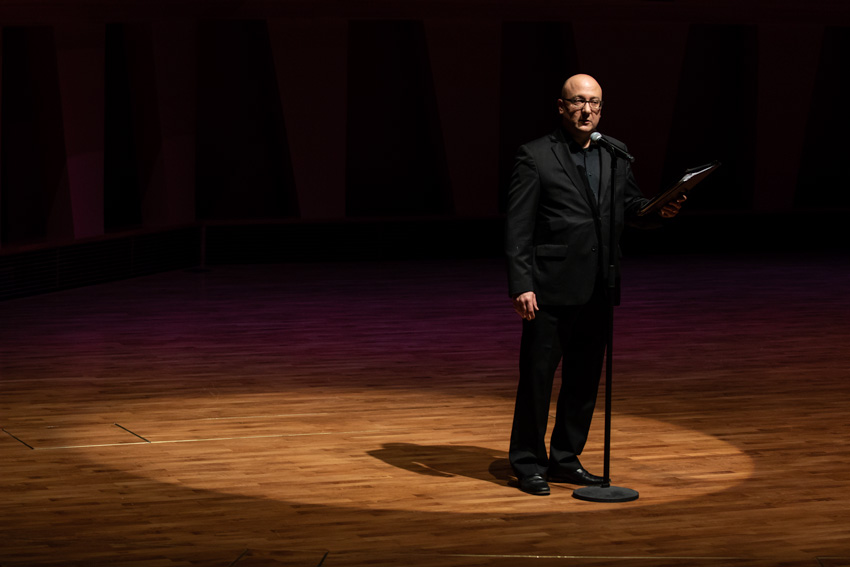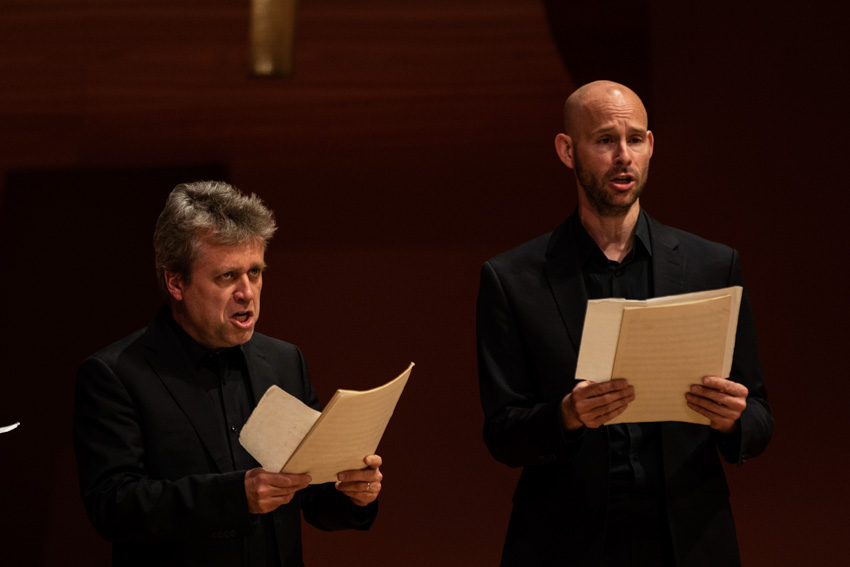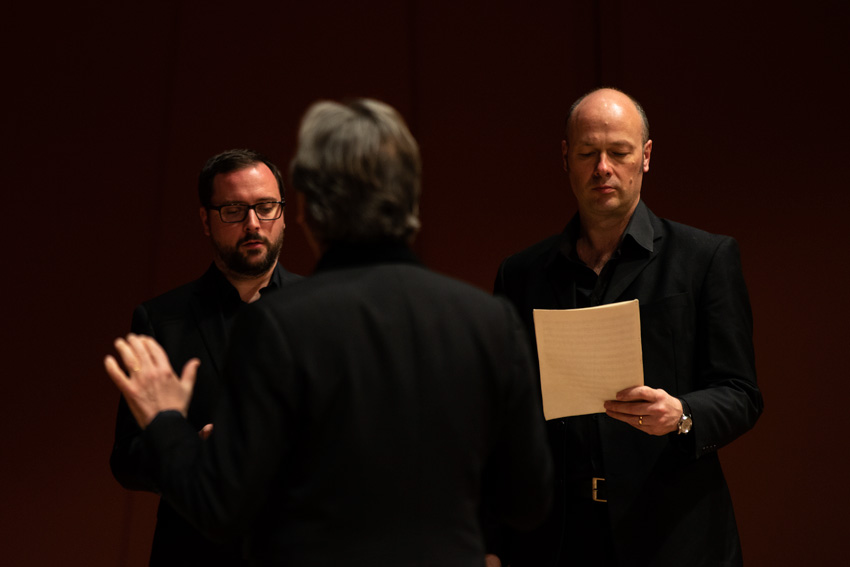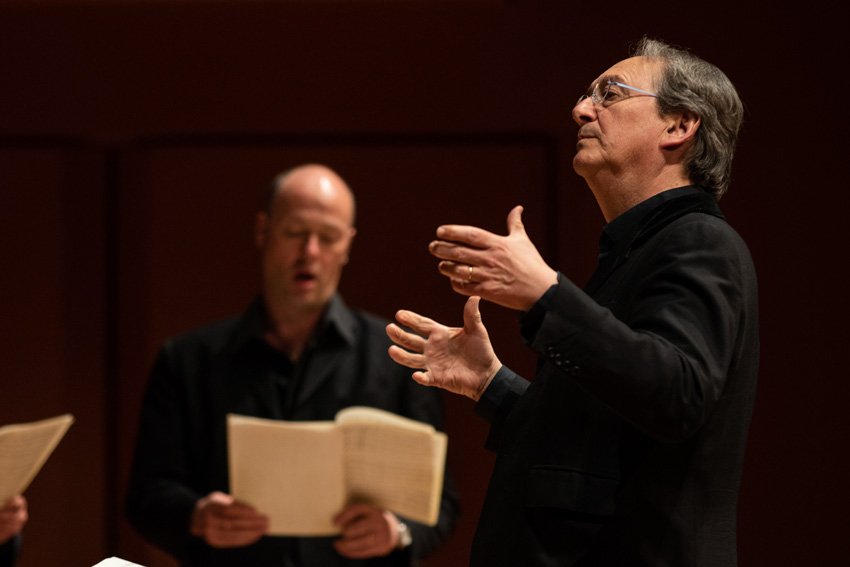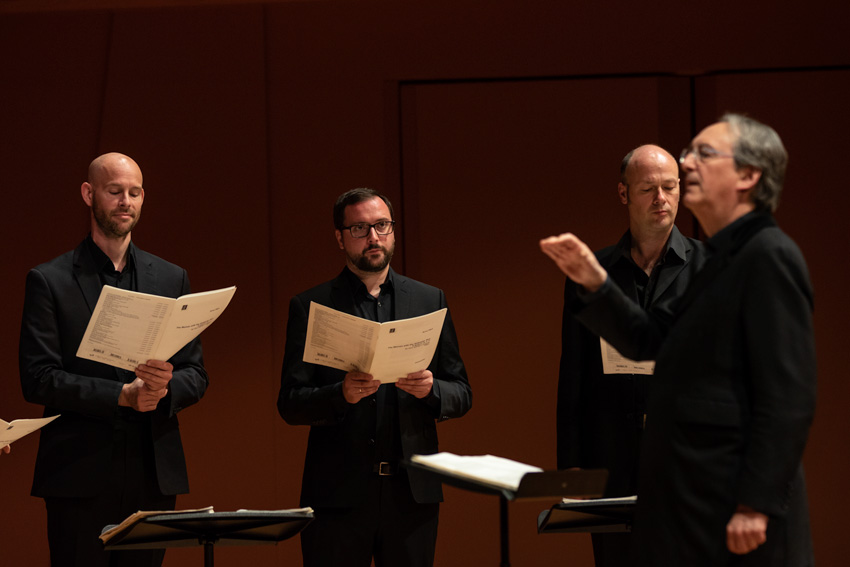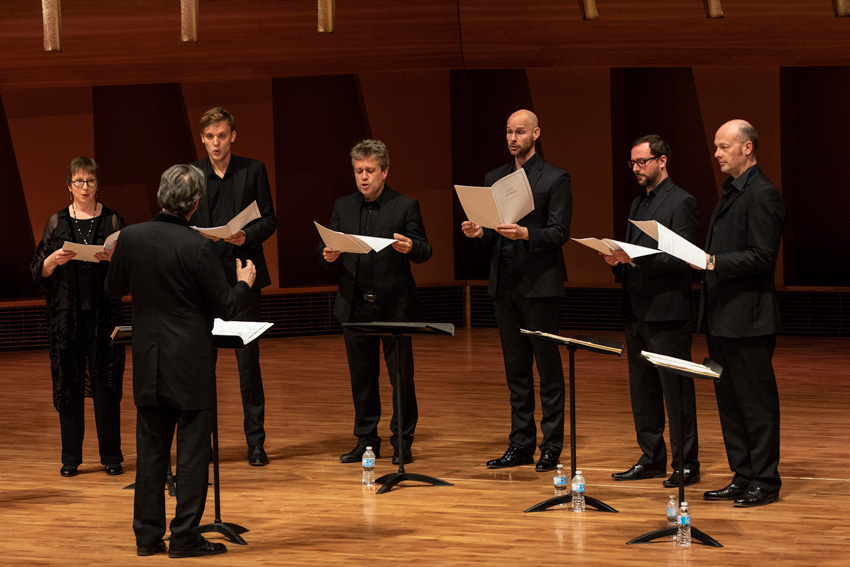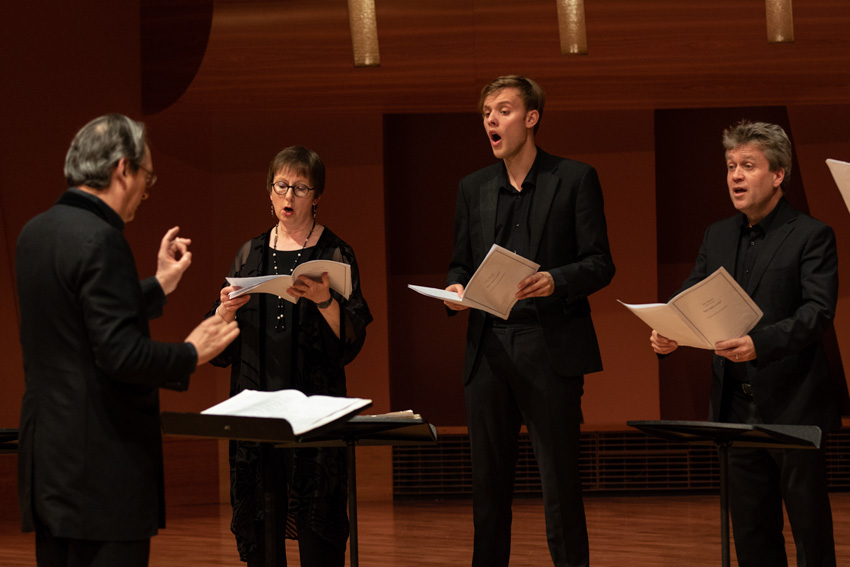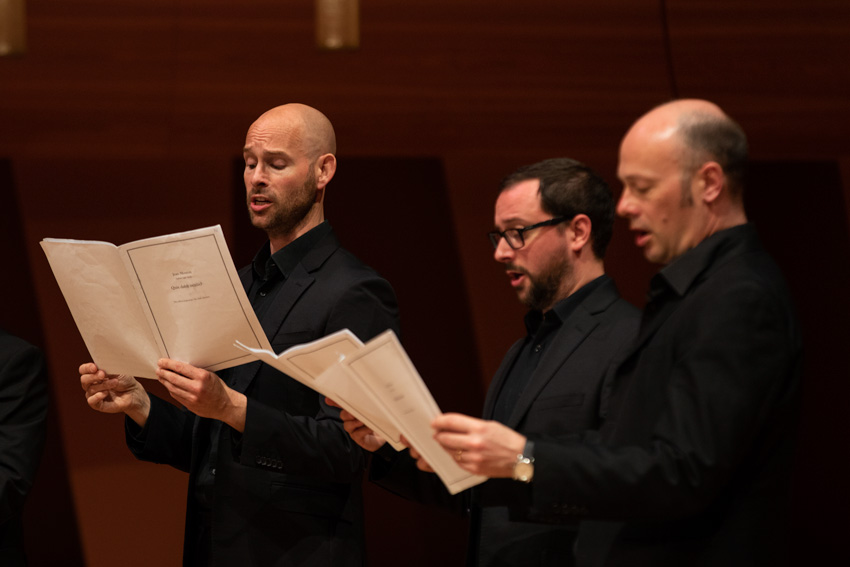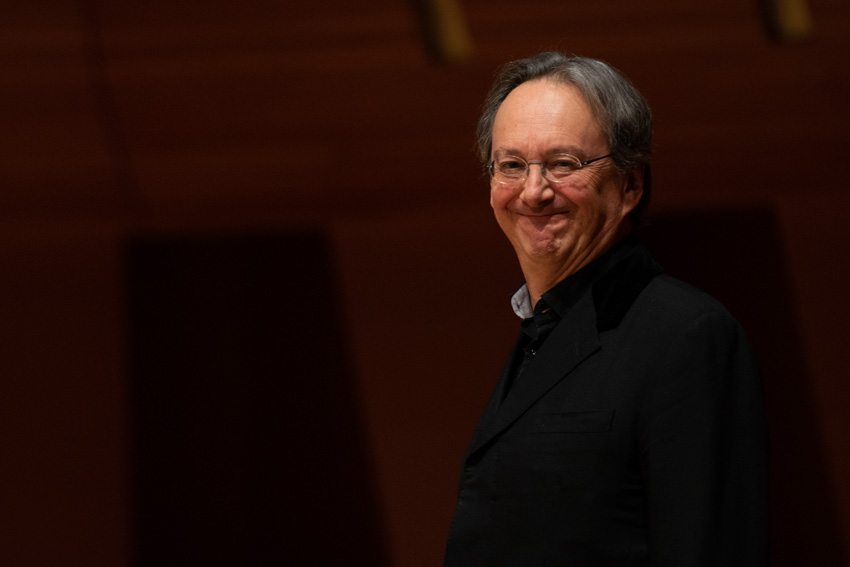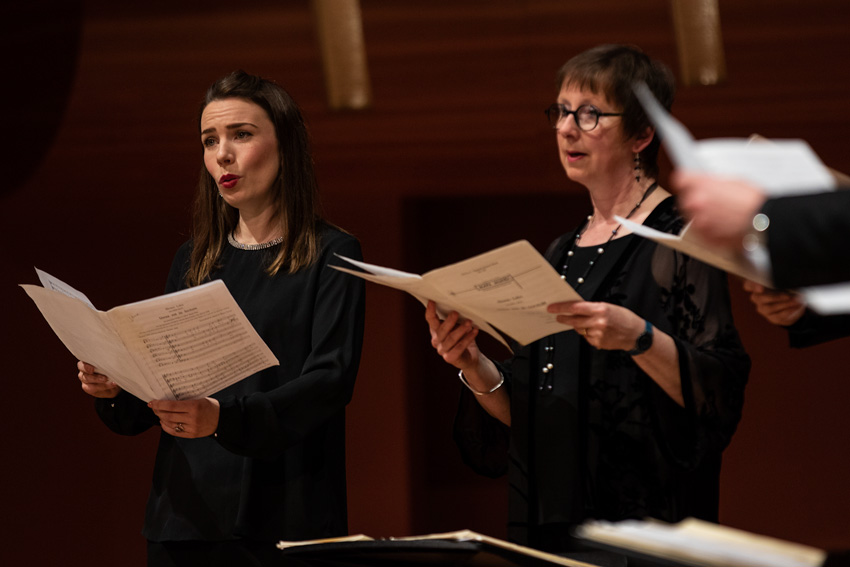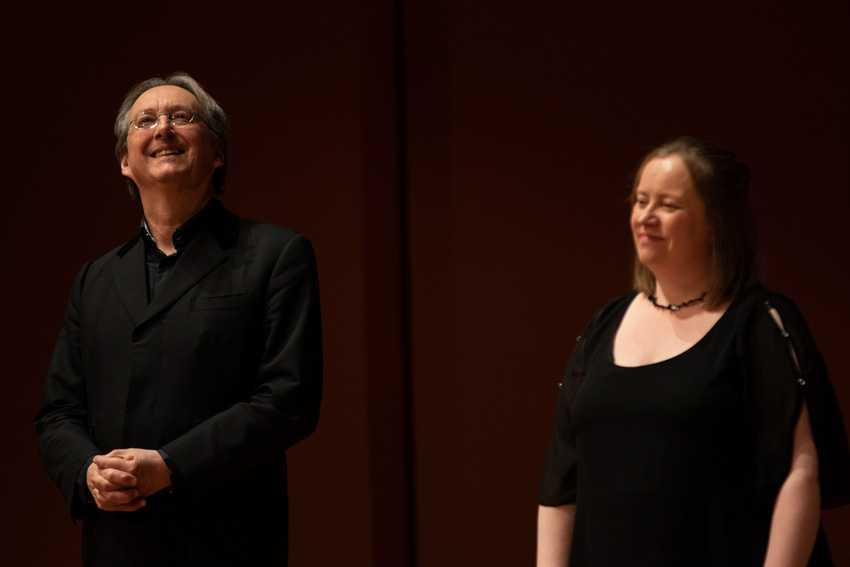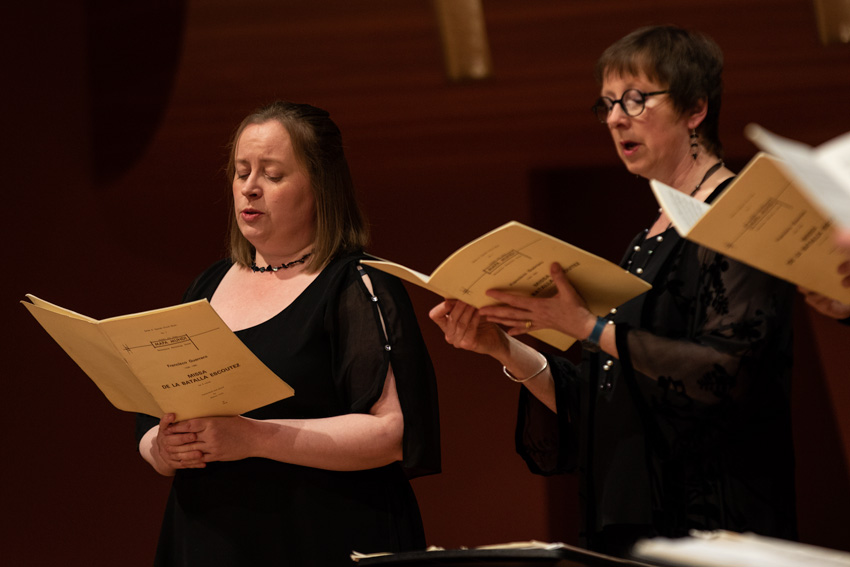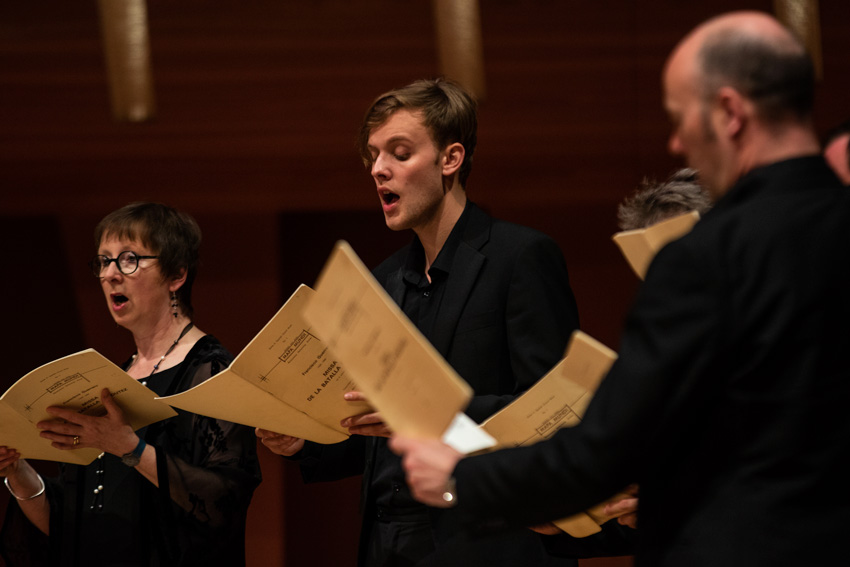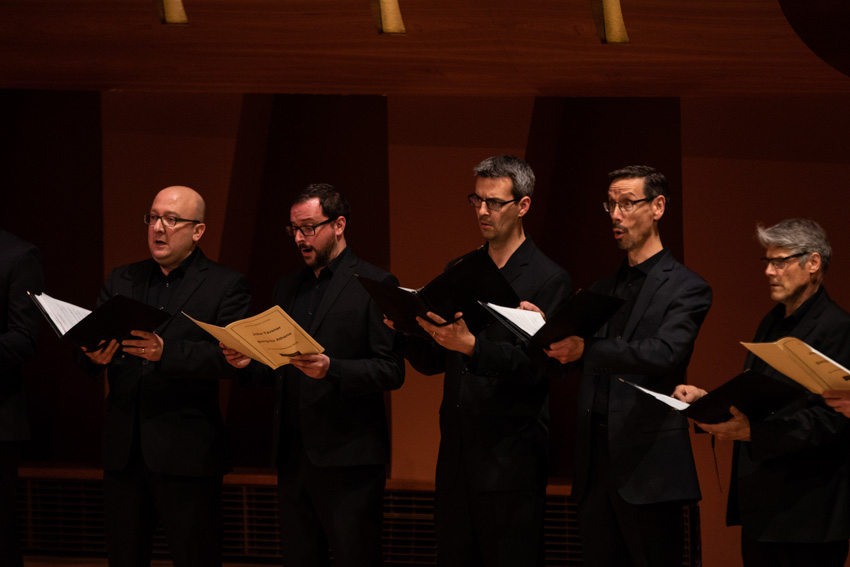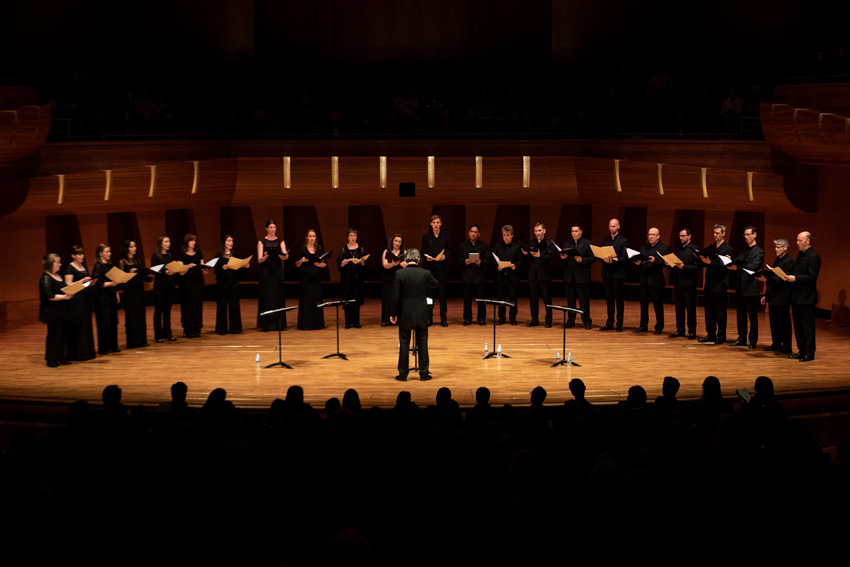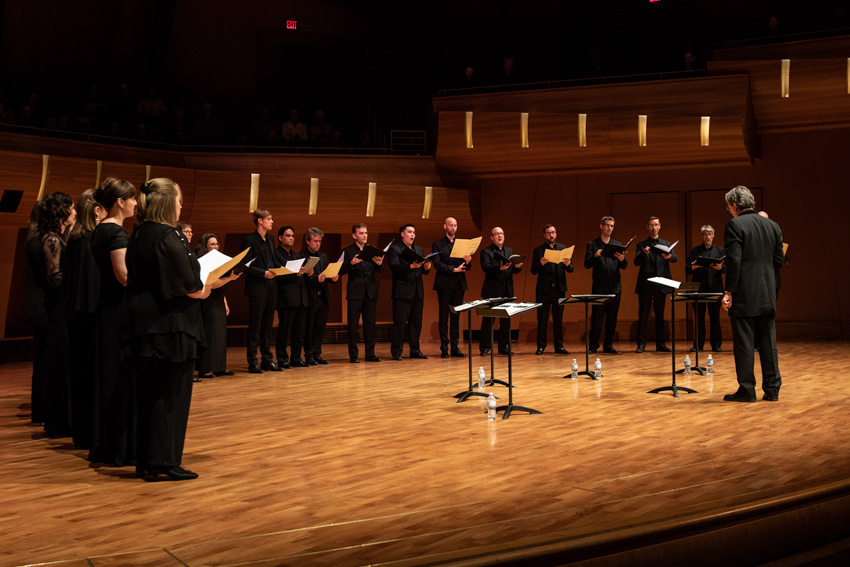
#LV BLOG ARCHIVE
William Walton: The Twelve
One of the works Luminous Voices will perform on its own is The Twelve by William Walton. The Twelve is an anthem for the Feast of any Apostle, and will feature both Neil Cockburn on the organ and various soloists from within the choir.
One of the works Luminous Voices will perform on its own is The Twelve by William Walton. The Twelve is an anthem for the Feast of any Apostle, and will feature both Neil Cockburn on the organ and various soloists from within the choir.
About William Walton
“I’m all right, now and then, but I bet I go down in history as ‘one of those miserable English composers.’”
William Walton
(1902-1983)
During a sixty-year career, Sir William Turner Walton wrote music in several classical genres and styles, from film scores to opera. His best-known works include Façade, the cantata Belshazzar's Feast, the Viola Concerto, and the First Symphony.
Walton was a slow worker, painstakingly perfectionist, and his complete body of work across his long career is not large. He wrote only one full-length opera, Troilus and Cressida, which has made little impact in opera houses. In his last years, his works came back into critical fashion; his later compositions, dismissed by critics at the time of their premieres, were revalued and regarded alongside his earlier works. That said, almost all Walton's works have been recorded for commercial release. EMI published a "Walton Edition" of his major works on CD in the 1990s, and the recording of the Chandos Records "Walton Edition" of his works was completed in 2010.
“The vibrant, stately chords of the ceremonial music reminded many admirers of Elgar. But Walton’s orchestral music, with its rhythmic irregularities and romantic sonorities, had a sound all its own.”
The Twelve: An Anthem for the Feast of any Apostle
The Twelve was commissioned in 1965 by Christ Church, Oxford, where Walton had attended choir school years before, and with which he had maintained a professional relationship. The Dean of the school, Dr. Cuthbert Simpson, had long been dissatisfied with the anthems available for use in church services, and especially sensed a need for music appropriate for Apostolic feast days. He thus approached Walton and poet W.H. Auden with a request for such a piece.
The work stands as one of the most distinctive in Walton's repertoire, owing largely to its wide ranging palette of harmonic colours, its ambitious style of rhythm and articulation, and its evocative and expressive approach to vocal texture.
At the time of its premiere at Christ Church in 1965, the work was scored for SATB soloists and SATB chorus, with organ accompaniment. A year after the premiere of this original version, the composer arranged the accompaniment for full orchestral forces. This fully orchestrated version was featured as part of a concert celebrating the 900th anniversary the establishment of the Westminster Cathedral, under whose arches it took place in January 1966.
The work runs about 11 minutes; it is divided into three general sections following Auden's text.
In the first, the humble beginnings of the apostles' ministry in chronicled, as well as the spread of their message, the conversion of masses, and the martyrdom at the hands of conspiring government officials.
The second section is a penitential poem whose quiet, fragile tones Walton entrusts to tandem soprano soloists.
The final section initially returns to the low men's range, employing a male chorus and tenor and bass recitative passages. Auden's final lines are delivered in a fugal texture before settling into a triumphant homophonic charge: "praise them with a merry noise."
VIDEO... Listen to the Choir of Wells Cathedral, Somerset, perform The Twelve, under the direction of Malcolm Archer.
Fauré's Requiem
Our next concert is already next week: a collaboration with the Calgary Philharmonic Chorus and organist Neil Cockburn! Luminous Voices will be presented by the Calgary Philharmonic Orchestra as part of its Calgary Phil Presents concert series on Wednesday 09 May. The second half of the collaborative program will feature the Requiem by the French composer Gabriel Fauré.
We don't have a lot of time to rest before our next concert: a collaboration with the Calgary Philharmonic Chorus and organist Neil Cockburn! Luminous Voices will be presented by the Calgary Philharmonic Orchestra as part of its Calgary Phil Presents concert series on Wednesday 09 May. The second half of the collaborative program will feature the Requiem by the French composer Gabriel Fauré.
About Gabriel Fauré
Gabriel Fauré
(1845-1924)
Gabriel Fauré is regarded as one of the foremost French composers of his generation. Fauré composed many of his most highly regarded works in his later years in a more harmonically and melodically complex style, which influenced other composers of the 20th century.
Fauré's music has been described as linking the end of Romanticism with the modernism of the second quarter of the 20th century. When he was born, Chopin was still composing, and by the time of Fauré's death, jazz and the atonal music of the Second Viennese School were being heard. Fauré became a founding member of the Société Nationale de Musique, formed in February 1871 to promote new French music. Other members included Saint-Saëns, Bizet, Chabrier, Franck and Massenet. Many of Fauré's works were first presented at the Society's concerts. In 1920, at the age of 75, he received the Grand-Croix of the Légion d'Honneur, a rare honour for a musician.
DID YOU KNOW... Fauré was hugely popular in Britain. He visited often and even played at Buckingham Palace in 1908. He attended the London premiere of Elgar's First Symphony that year and had dinner with Elgar afterwards. "I admired him greatly," said Elgar, who tried to get Fauré's Requiem put on at the Three Choirs Festival.
Requiem in D minor, Op. 48
“Everything I managed to entertain by way of religious illusion I put into my Requiem, which moreover is dominated from beginning to end by a very human feeling of faith in eternal rest.”
Fauré composed his Requiem between 1887 and 1890. At La Madeleine church in Paris in 1888, Fauré conducted the premiere of the first version of his Requiem, which only included five movements (Introit et Kyrie, Sanctus, Pie Jesu, Agnus Dei and In Paradisum). In 1893, Fauré conducted the premiere of a revised version, again at La Madeleine in Paris, now with an Offertory movement and the Libera Me.
DID YOU KNOW... The Dies irae (Day of Wrath), a hymn from the Requiem Mass that describes the Last Judgement, is not included in Fauré's setting, in keeping with the composer's views about death. In fact, Fauré saw death as a "happy deliverance, an aspiration towards happiness above, rather than as a painful experience", a sentiment that resembles the Requiem composed by his contemporary Johannes Brahms.
In 1899-1900, at the insistence of his publisher, Fauré reworked the score for full orchestra for performance in concert halls. The 1888 and 1893 premieres of the Requiem were at La Madeleine, a church in Paris, so the intimate sound of the earlier versions was effective in liturgical performances. But for the large concert venues, and large choral societies of the time, a larger orchestra was required.
At the time the Fauré Requiem was first performed, church authorities disallowed female singers and insisted on boy treble and alto choristers and soloists; Fauré composed the work with those voices in mind, and had to employ them for his performances at La Madeleine. However, in the concert hall, unconstrained by ecclesiastical rules, he preferred female singers for the upper choral parts and the solo in the Pie Jesu movement.
The final version reworked for orchestra was premiered in Paris on 12 July 1900, during the Exposition Universelle. This full orchestral version was also performed at Fauré's own funeral in 1924l he had died in Paris from pneumonia on 4 November 1924 at the age of 79.
What to expect on May 9, 2018
Instead of a full orchestra, the collaborative performance by Luminous Voices and the Calgary Philharmonic Chorus will be accompanied by Neil Cockburn playing the Carthy Organ in the Jack Singer Concert Hall. The movements of theFauré Requiem include:
- Introit et Kyrie
- Offertory
- Sanctus
- Pie Jesu
- Agnus Dei
- Libera Me
- In Paradisum
The work features soprano and baritone soloists. Our soloists for this production are Hannah Pagenkopf, soprano, and Nicholas Allen, baritone. The work will be conducted by Timothy Shantz, who is both founding director of Luminous Voices, and the Chorusmaster of Calgary Philharmonic Chorus.
Photo album: The Tallis Scholars in Calgary
Huge thanks to Jonathan Love and photographer Leonora Pena Arce of Mount Royal University for providing beautiful photographs from the recent visit to Calgary by the world-renowned Tallis Scholars!
Huge thanks to Jonathan Love and photographer Leonora Pena Arce of Mount Royal University for providing beautiful photographs from the recent visit to Calgary by the world-renowned Tallis Scholars!
We've launched our 2018-19 season!
We've launched our 2018-19 season! Season subscriptions are available now!
We've launched our 2018-19 season! Season subscriptions are available now!
Here's founder and director Timothy Shantz with a summary of the four concerts we will offer next season.
John Tavener: Song for Athene
Luminous Voices is not just cohosting The Tallis Scholars with the Taylor Centre of the Performing Arts. We are also going to sing with them!
Luminous Voices is excited to not only cohost The Tallis Scholars, but also sing with them! We will be singing John Tavener's Song for Athene when the award-winning ensemble finishes its tour of the US and Canada in Calgary on Tuesday 24 April.
About John Tavener
John Tavener (1944-2013)
Sir John Kenneth Tavener was one of the UK's leading composers of religious works.
Tavener first came to prominence in 1968 with his dramatic cantata The Whale, based on the Old Testament story of Jonah. It premièred at the London Sinfonietta's début concert, which was also the opening concert of the Queen Elizabeth Hall. Other works of note is his A Celtic Requiem, which impressed Benjamin Britten enough to persuade Covent Garden to commission an opera from Tavener: the ultimate result, to a libretto by playwright Gerard McLarnon, was Thérèse.
“He could bring an audience to a deep silence which is a very rare gift. He believed that music was for everybody and was a prayer.”
Tavener's earliest music invokes the sound world of Stravinsky and the ecstatic quality found in various works by Messiaen. His later works, however, were influenced by Orthodox theology and liturgical traditions. He was particularly drawn to its mysticism, studying and setting to music the writings of Church Fathers and completing a setting of the Divine Liturgy of St. John Chrysostom, the principal eucharistic liturgy of the Orthodox Church: this was Tavener's first directly Orthodox-inspired music. Tavener recognised Arvo Pärt as "a kindred spirit" and shared with him a common religious tradition and a fondness for textural transparency.
Song for Athene
John Tavener’s Song for Athene, written after the unexpected death of a family friend, Athene Hariades, became embedded in the public consciousness after it was performed at the funeral of Princess Diana in 1997. The sincerity and impact of the words, fashioned from a fusion of Orthodox ritual and Shakespeare, together with its radiantly optimistic, alleluiatic conclusion, struck an instant chord with a grieving public.
- VIDEO: Watch and listen to the choir singing Tavener's Song for Athene at the funeral of Princess Diana at Westminster Abbey on 06 September 1997.



